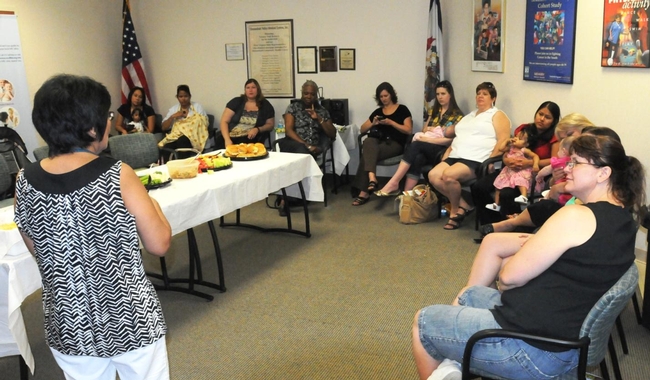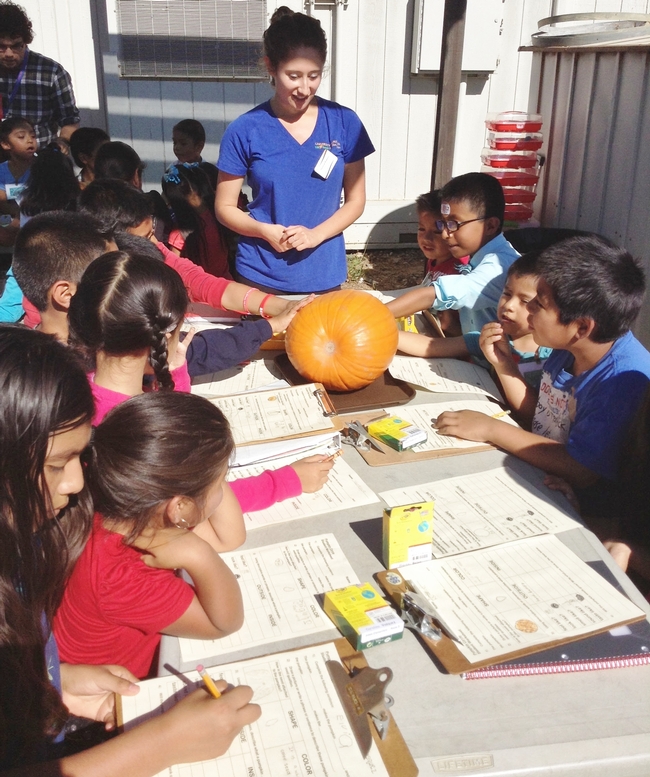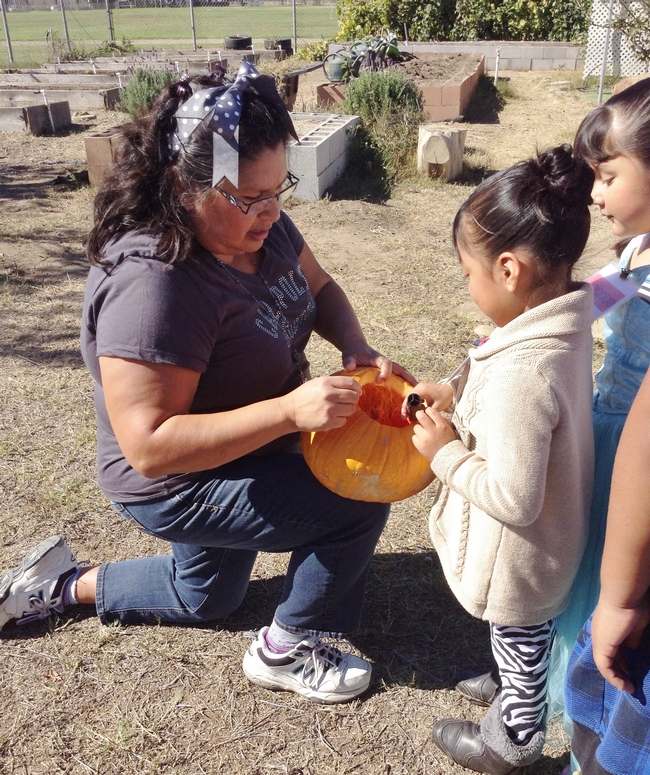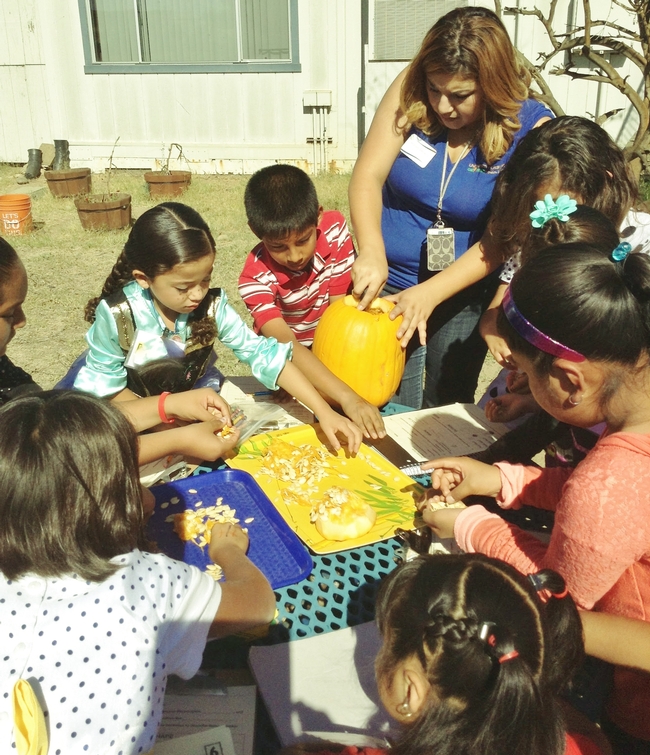UC Food and Agriculture Blogs
Hackers compete for best ag app
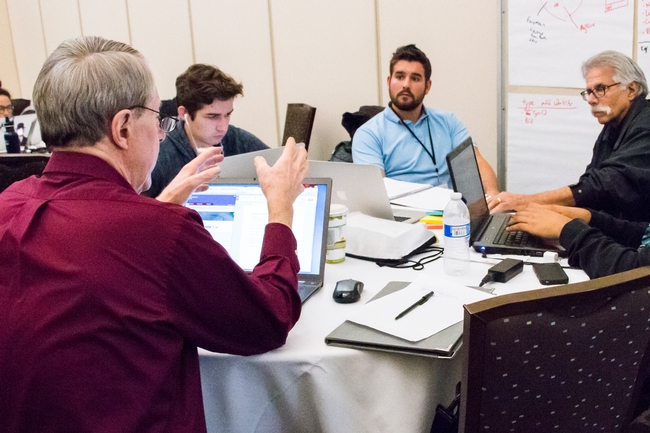
Old coffee cups, laptops streaming code, baggy eyes deprived of sleep: all the usual signs of hackers at work. But a poorly lit hacker hideaway this was not.
The overnight competition, called the Apps for Ag Hackathon, featured farmers, food science students and UC Agriculture and Natural Resources (UC ANR) extension specialists. They teamed up with software developers to craft quick technology solutions that addressed deep challenges in the planet's food systems.
A summit for solutions
The hackathon, in partnership with the World Food Center at the University of California, Davis, was one of a series of events at the Food, Ag and Health Solution Summit, held Dec. 1-3 at UC Davis. Each chapter of the summit brought together uncommon collaborators to partner on a range of possible agtech solutions.
On the first day, the World Food Center's Precision Ag Workshop focused on paving a long-term roadmap with potential industry partners. Ranging from small startups to global corporations and well-established California commodity associations, each organization was investing in front-end irrigation technologies and looking for new opportunities to collaborate with academic researchers.
The pace switched to rapid-fire for a panel at the summit forum on day three: entrepreneurs from eight different agtech startups had seven minutes to pitch their products to the audience. Delving deeper into the world of agtech financing, a later panel discussion asked professional investors what they would look for in startup models.
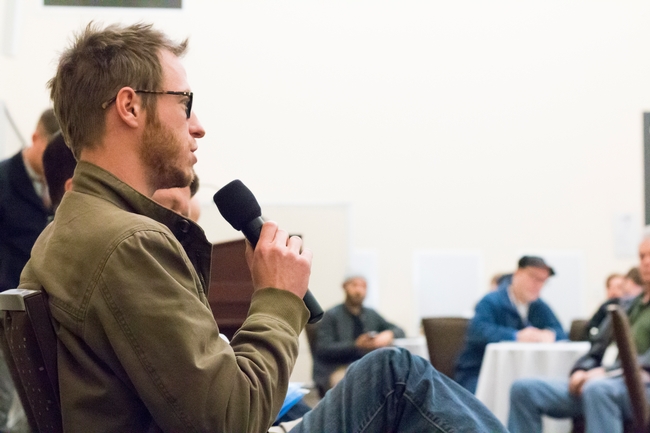
Hacking through the night
The hackathon ran alongside the forum and other summit events. Participants had only a 32-hour window to fuse together teams, brainstorm a product, develop rough cuts of their software and present their final pitches to the judges.
"People get a little low on sleep, they get a little silly, the creative juices really start flowing," said Apps for Ag organizer Patrick Dosier to Capital Public Radio. "Software developers often have their headphones on and they're in the zone writing code."
With $10,000 in total prize money and a paid trip to Zurich, Switzerland, at stake, the hackers in their final minutes before turning in their presentation slides were actually focusing more on the human network. The conversations evolved away from talk of web hosting software and .png files to meeting for a coffee later and talking about ways to collaborate in the future. While some groups rehearsed their pitches, others exchanged business cards and phone numbers.
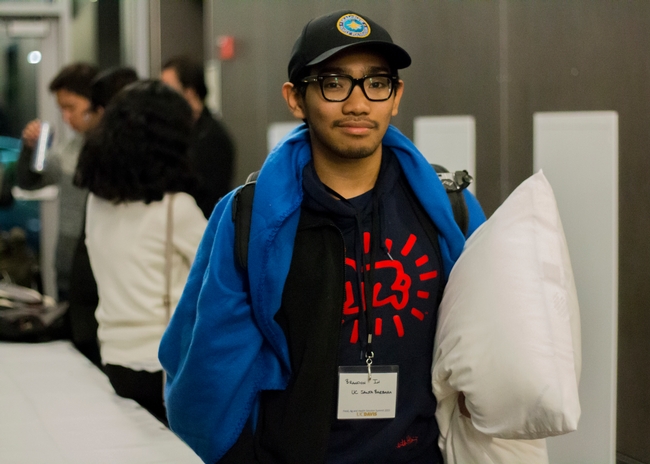
From the Central Valley to Silicon Valley
By presentation time at the tail end of the conference, the hackers were visibly exhausted, some carrying pillows and others seen napping in vacant rooms. Thanks to blankets donated by AT&T, many were able to grab quick rests during the hack.
On stage, the Ag for Hire team showed off their app. It connected contract farmworkers to farmers looking to hire. A "LinkedIn for agricultural labor," the app idea took first place at the competition.
"As a worker myself, it's hard to find a job where I can apply my skills," said team member Alejandro Avalos, who has worked on farms since he was 12 years old. "Our app helps a worker find a job based on his skills and actually get a decent wage for it."
Nick Doherty, a UC Davis undergraduate student and recent pick for Apple's 20-Under-20 list, was also on the team.
Along with the $5,000 award, the team will be flown to the Thought for Food Global Summit in Switzerland next year.
Second place and a $3,000 prize went to the team for CropRescue, an app that allows growers to communicate directly with food banks to make excess food donations easier and more efficient. The final $1,500 prize went to the Green Thumb team, which created a task-tracking app to enable better communication among crop advisers, growers and foremen.
UC innovation goes global
Patrick Brown, a UC Davis plant nutrition professor and pomologist at the Agricultural Experiment Station, advised the hackathon teams, as well as taking part in other events. UC ANR small farms advisor Margaret Lloyd also participated in the summit.
Sponsors for the Solution Summit prizes included Intel, UC ANR, the UC Global Food Initiative, UC Innovation Alliances and the Royse Law Firm. The Global Food Initiative also sponsored travel for two doctoral candidates at UC Berkeley and UC Riverside. The Solution Summit was held in partnership with the Innovation Institute for Food and Health, the Mixing Bowl Hub and the SARTA AgStart incubator.
See the Food Hackathon that inspired the competition.
Author: Brad Hooker
Coyote Populations Increasing in Southern California Neighborhoods
From the UCANR NEWS BLOG Coyotes are much more abundant now in urban areas of Southern California than they have ever been before, reported the Long Beach Business Journal. For the story, the Journal interviewed UC Agriculture and Natural Resources...
![Coyote in suburban neighborhood. [T. Boswell]](http://ucanr.edu/blogs/UCIPMurbanpests/blogfiles/33600.jpg)
Coyote in suburban neighborhood. [T. Boswell]
Both in-person and online nutrition education are effective for teaching WIC participants
Established in 1974, the Special Supplemental Nutrition Program for Women, Infants and Children (WIC) is the only federal nutrition program that provides education and counseling to recipients who receive assistance to buy nutritious foods. Depending on the learning style and time restraints of the recipients, however, staying at the WIC center for training and counseling can be a barrier for participation.
The researchers, who are part of UC ANR's Nutrition Policy Institute (NPI), showed that lessons about the importance of eating a healthful breakfast everyday were as effective when presented in person as they were when the participant completed the class on a smart phone, tablet or computer.
“Access to the Internet has rapidly increased in the United States,” said Lauren Au, NPI assistant researcher and lead author of the research article. “To our knowledge, however, the effectiveness of online vs. traditional classes in delivering nutrition education in WIC has never before been studied in a randomized trial.”
The researchers selected breakfast as the lesson topic because it had not been taught before as part of WIC nutrition education even though there is ample evidence to show that regularly eating breakfast is associated with a higher quality diet and decreased risk for obesity.
During the online and classroom training, participants learned why skipping breakfast can lead to poorer health for children and adults and how WIC foods – such as fruit, vegetables, milk, and whole grain cereals– can be used to make healthy breakfasts. Each of the participants was asked to set personal goals for eating healthy breakfasts and making sure their children did as well.
Before the classes began, the participants took a pretest to gauge their knowledge on the topic, and immediately after the class, the test was administered again. Two to four months later, follow up assessments were made to determine whether the participants breakfast behavior had changed and whether they remembered important facts from the training.
“All the participants increased and retained knowledge about how much juice WIC recommends per day – no more than half a cup – and how much sugar per serving of cereal is recommended – no more than 6 grams,” Au said.
Au said the researchers were pleased to confirm that online education is an effective supplement to in-person training.
“Both education types have advantages and disadvantages,” she said. “There's group peer support in the in-person education, and that can be a very powerful motivator. WIC appointments can be faster with online education, which can provide more flexibility and convenience. Both of these education approaches are incredibly beneficial for promoting healthy dietary behavior in WIC participants.”
A six-minute interview with Au about the research project may be viewed online.
An initiative to maintain and enhance healthy families and communities is part of the UC Division of Agriculture and Natural Resources Strategic Vision 2025.
Eat Local Market Report
I know it is December, but that doesn't mean there isn't any great fresh local produce available. Northern California has a climate that allows us to produce crops year-round and we have farmers who work hard to grow and sell crops all year. Just...
Planting the seeds for garden-based education
The UC CalFresh Nutrition Education Program in Santa Barbara County (UC CalFresh) is planting new ideas and possibilities to increase teacher use of school gardens.
Each school day, teachers must carefully plan and account for their instructional minutes. For each grade level has specific time recommendations for math and English language arts, so teachers often feel they do not have the time to include extra activities in their already packed schedules. When UC CalFresh gave a brief survey to teachers a Santa Maria school last year, teachers identified the following barriers to using their school garden for instruction:
- Lack of instructional time or preparation time
- Lack of curriculum and learning activities
- Too many students to manage in the outdoor setting
These concerns reflected comments that UC CalFresh nutrition educators frequently heard from teachers who were invited to bring their students to the school garden.
Taking these concerns into consideration, UC CalFresh developed innovative strategies to meet the needs of school teachers, showing how instructional minutes in the garden don't have to be “extra” and can include hands-on learning for English language arts and math, with a focus on nutrition. The strategies include:
- Clearly aligning garden-based nutrition education with common core lessons
- Providing garden-based curriculum and materials for learning activities in the garden
- Hosting Garden Open House Days, during which teachers can bring their students to the garden when UC CalFresh Educators are present to increase educator-to-student ratios.
To meet the needs of partnering teachers, UC CalFresh educators developed “No-Prep Nutrition Education Kits,” enabling teachers to teach common core-aligned nutrition education lessons without having to use prep time to make copies or create materials of their own. This year, based on the survey data, UC CalFresh expanded the No-Prep Nutrition Education Kits to include lessons that could be taught in the garden.
The first No-Prep Garden-Based Nutrition Education Kit was piloted in October and featured pumpkins. The No-Prep Kit became fondly known as the Pumpkin Kit. The Pumpkin Kit encouraged teachers to take the lesson out to the garden, increasing students' physical activity time while providing opportunities for students to practice common core skills. The kit focuses on nutrition and cooking while reinforcing math, science and language arts. The kit includes books, worksheets, an oven, and several different pumpkins for measuring, cooking, estimating, and tasting. This kit requires no teacher prep time, is adaptable to any primary grade level, and is an easy introduction to garden-based lesson delivery.
During a Garden Open House Day hosted by UC CalFresh in October, kindergarten students and their fifth-grade buddies came out to the garden. The fifth-grade buddies worked with the kindergarten students to use observation skills (five senses), learn adjectives, and draw the pumpkin life cycle. The older buddies gained teaching and language arts skills while working with their little buddies in the garden. Students got to dissect the pumpkins in teams and used the seeds for counting. Each kindergartener took 20 seeds home to practice counting with their parents, which also served as a budding connection for students' families and the school garden.
"If we had something like this every month, we would be able to go out into the garden more and maybe we could get more teachers to come. This is what we need, curriculum that can be used in the garden," said kindergarten teacher Mrs. Joaquin.
Moving forward, UC CalFresh is piloting bimonthly No-Prep Kits for garden-based lessons, featuring the USDA's DigIn! curriculum, as well as other UC curricula. Teachers can teach with the kits on their own in the garden or come during UC CalFresh hosted Garden Open House Days for extra educator support. By easing teachers' paths into the garden, students get to spend time outdoors, engage in physical activity, and participate in learning that reinforces their science, English language arts and math skill development.
“The program has been awesome," said one fourth-grade teacher. "[UC CalFresh] incorporated math, science, social studies into lessons. Students were excited and engaged. Many tried new vegetables they'd never had before and liked them! Kids learned responsibility and pride in designing, choosing plants, maintaining and harvesting in school garden.”
For more on UC CalFresh of San Luis Obispo and Santa Barbara counties see the Facebook page at facebook.com/uccalfreshslosb
UC CalFresh nutrition education is offered in schools jointly by UC Agriculture and Natural Resources and USDA.



